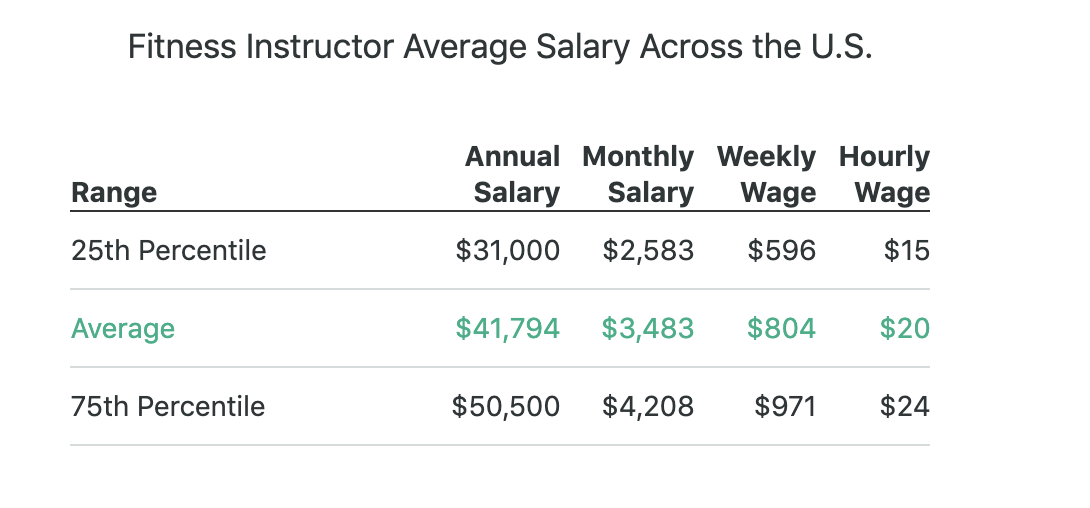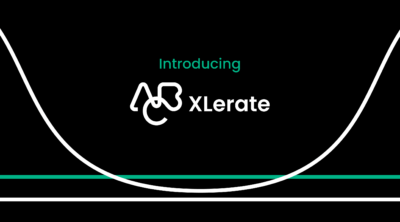Do you know the Kohler Effect is?
It is a phenomenon that occurs when a person works harder as a member of a group as opposed to working out alone. In a persons mind, they don’t want to be the weakest member of the group, so they push themselves harder to succeed.
It is one of the primary reasons group fitness has become so popular in the last number of years. This, alongside the value of community in fitness, has turned group fitness into from a trend in the industry to an actual change in the way people workout.
Take a look at some of the most popular fitness franchises of recent times. You can see how much the importance of the group is to the success of the franchise. Look at Tough Mudder Bootcamp which loudly state “Come Alone, Crush It Together”. Go to any F45 class and you will experience their “Team Training, Life Changing” in real time.
This is the reason the group fitness model is catching up on their big-box relatives. In response, the big box has responded by adapting, not attacking. They have spawned off their take on the group fitness concept, with big box titans like Golds Gym rolling out Golds Studio and 24 Hour Fitness launching TC24.
So what does all this mean?
That there has never been a better time to become a group fitness instructor! In this article we will look at the following:
What Is a Group Fitness Instructor?
A group fitness instructor is a fitness professional who leads a group exercise class. This could be a spin class, HIIT training, yoga or boxercise. Group classes have always been in and around the fitness industry. They gained popularity in the 1980s and early 1990s through the likes of Jane Fonda and Richard Simmons. They brought the aerobics class from the studio into a persons living room. And who could forget the unique creations of Billy Banks with Tae Bo and Judi Sheppard Misset with Jazzercise. This gave people lots more options to stay fit and healthy.
The rise of the group based workout at the time was a direct reaction to macho bodybuilding. This Arnold Swchaernagger inspired weightlifting and bodybuilding phase popularised the 1977 documentary Pumping Iron. The 80s trend towards home video workouts made stars of the fitness instructors who would lead exercise classes on video as well as in the living room. It was likely around this time that the actual idea of becoming a group fitness instructor became popularised.
Fast forward to now, the career of a group fitness instructor has never seemed more viable. According to the Bureau of Labor Statistics from the United States Department of Labor, there are over 299,200 fitness instructors in the US alone, and it’s projected that this will reach 329,200 in 2026.

So while the stock of the group fitness instructor is clearly on the up and up how does this compare to the career of a personal trainer? We will look at this in the next part of this article.
Does This Mean the End of the Personal Trainer?
A personal trainer trains an individual one on one and usually has a roster of clients that will book in with them throughout the day. This could be at the crack of dawn, during a busy lunch hour, or sometimes later on that evening. Personal trainers are still very popular among those who value close instruction when they exercise, and it shows as according to recent financial reports the personal training industry generated the total revenue of $9 billion in 2019. There are currently 590,146 personal trainers employed in the USA at the moment, and there are another 330,000 jobs forecasted to be added by 2026.

Source: fitnessmentors.com
So as we can see the personal trainer has not bit the dust just yet. In fact, like the big box gyms we discussed earlier, they are adapting. A hybrid of group training and personal training has emerged which is called small group personal training. This an attempt to bridge the gap between one on one group training and large group exercise. In fact, a lot of fitness professionals are able to fit comfortably into both roles. By earning certifications in both strands of training a fit pro will immediately be seen as more employable to fitness business owners seeking to provide both types of training.
Personal Trainer Vs Group Fitness Instructor
Let’s take a look at some differences between the group and personal trainers. We will overview the areas of personality, quality control and earning potential and hours.
Personality: A personality of a personal trainer can differ sometimes from that of a group instructor. A personal trainer, while still needing to be motivational, can have a more introverted personality. The group fitness instructor, on the other hand, needs to be a leader. They need to be able to light up the room with their personality. With group fitness, the reality is that the character of the trainer can have a significant impact on retention.
Quality Control: While the group fitness experience can be a lot more beneficial in terms of getting fit, it can sometimes lack quality control in terms of checking for correct form. This is why the hybrid workout model of group personal training has the benefit of having more individualized instruction with greater opportunity for the trainer to correct form.
Earning potential: While the best fitness professionals are driven by the need to help others, the reality is that bills need to be paid. The advantage of being a personal trainer is that you can see any number of clients throughout the day and charge a way higher price than a fitness class. If you a group instructor, and do not own the business, you will be getting paid a much lower wage per class.
Hours: While you have the potential to see as many clients as you like as a personal trainer, there is also the potential for an unhealthy work/life balance which can cause burnout. The hours that a group fitness instructor works are more manageable with classes typically occurring early morning, lunchtime and the early evening.
How Much Does a Group Fitness Instructor Make in the USA Right Now?
How much you can potentially earn should not be the deciding factor in choosing a career as a group fitness instructor. However, there is no getting away from its importance.
The Customer
Engagement Playbook
for Your Fitness
Business
Discover more According to the US jobs website Zip Recruiter, the average wage for a fitness instructor in 2019 is $41,794 a year in the USA., while for personal trainer the average salary is $44,074 a year. As we can see in the table below the wages of a group fitness instructor ranges from $31,000 per year in the 25th percentile while it is $50,500 per year in the 75th percentile.

Source: ZipRecruiter
The average wage for group fitness instructors has risen since 2017 where the median average wage was $39,210 per year.
What Does It Take to Become a Group Fitness Instructor?
There are varying opinions on what level of certification you need to become a group fitness instructor. At a base level, most people in the industry have at least a high school diploma according to the Bureau of Labor Statistics. This is seen as a typical entry-level requirement as you begin on the bottom rung of the ladder.
Credible certifications for group fitness instructors are now mandatory rather than optional. Training standards have been elevated as group exercise has become more popular. As we have stated previously, there are fitness professionals who operate in both roles.
There is no limit to the type of education you need. Because of this, you will find some instructors have taken exams for different training certification programs and degrees at all levels. This can range from diplomas to degrees right through to masters and doctorates. This can be in subjects such as sports medicine, exercise science, exercise psychology. It may be a good idea to go down the path of getting a four-year degree in a fitness related subject.
There are many organizations in America that provide group fitness certification. To give you an idea of what certifications are the best and are the most suitable for you lets take a look through four of the most popular.
Some of these are accredited by the National Commission for Certifying Agencies(NCCA) which is generally held as the standard of excellence in the field. Other training certifications here are in the process of being certified or are offered by associations who have NCCA accreditation.
1. The ACE Group Fitness Instructor Certification
The American Council on Exercise(ACE) is a leading organization in the area of fitness certification and has been for a long time. ACE is accredited by the NCAA as are all of its core certifications including its group fitness certification.
It is also the only certificate on the list certified by the European Health and Fitness Association.
You can find more information on the content of the course and its pricing here.
2. The ACSM Group Fitness Instructor Certification
One of the most reputable organizations on the list, The American College of Sports Medicine is recognized by the NCAA. Its training certificate for group exercise is not recognized just yet. However, you can be sure this certificate had a lot of quality research and development put into it.
The course goes through things like endurance and cardiovascular section and general health and strength. They also cover conditioning, flexibility and body composition. A high school diploma or equivalent for this course
Take a lot at the website for this course to find out more.
3. The AFAA Group Exercise Instructor Certification
The Athletics and Fitness Association of America is the most focused on group fitness on the list. They also love praising their members – take a look at their Instructors Who Rock section of their website.
The course is accredited by the NCAA and goes through a few different topics. These are things like how to design and lead a class, the foundations of nutrition and weight management. They also go into those essential business skills that can help you further your career.
Look at their website for more information.
4. The NETA Group Excercise Certification
This training program run by the National Exercise Trainers Association and is NCAA accredited. NETAs certification offers live in-person workshops as an add on to the package.
The NETA pride themselves on emphasizing practical elements as well as theoretical elements, hence the inclusion of the workshops. The course goes through topics such as anatomy, physiology, nutrition, choreography, communications, physical activity, and fitness.
Take a look at the NETA website for more information.
What Happens After Certification?
Once you have received your certification, you should have the base level skills that you need to teach group fitness classes. However, you should be constantly looking to improve your skills and knowledge through practice and self-learning. You will need to earn CECs or CEUs (which stand for continuing education credits/ units) to keep the certification valid. Many organizations provide opportunities all year round for you to do this. Check out any fitness conferences near you as they will provide the chance to earn these valuable credits.
Table of contents















